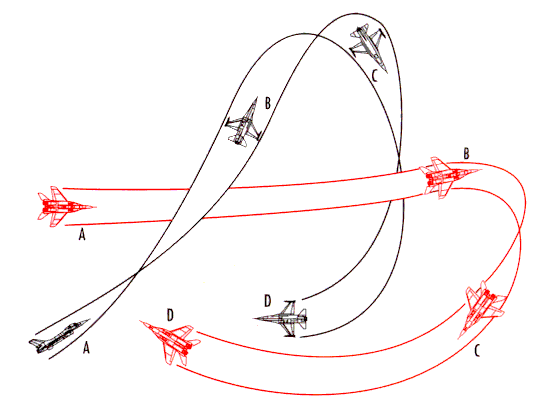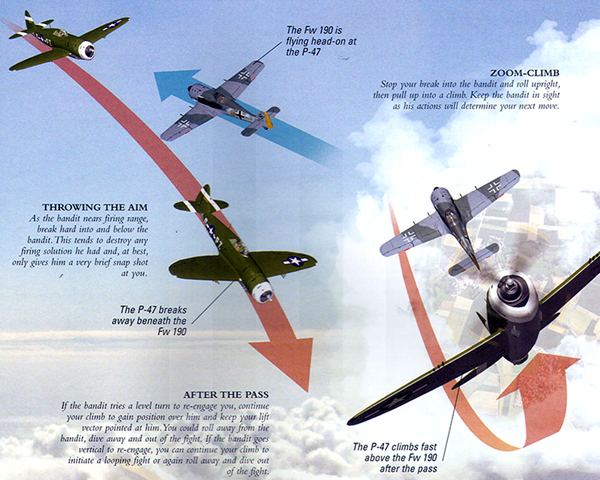
Although the tactic was later modified so that the forth Vic would weave casualty ratesĭespite complaints about the Vic formation no official change was forthcoming so some squadrons adapted a tactic being used by the Luftwaffe called Schwarm, which was a more flexible tactic. As with only the lead aircraft able to look for the enemy whilst the otherĪircraft concentrated on keeping formation an attacking aircraft could catch the formation by surprise. Skies above Britain and the English Channel the ineffectiveness of the Fighter Area Attack tactic was soon exposed. When the battle began the Luftwaffe were able to operate from airfields in France enabling German fighters to escort their bombers all the way to Britain.

So for example, as shown in the squadron structure diagram below, the red section leader would be known as red one. Section leader with two wingmen, with red and yellow normally making up 'A' flight and blue and green normally making up 'B' flight, with a colour and number identifying each aircraft.

The squadron would be split into four sections (red, yellow, blue and green) with three pilots (one, two and three), with two sections making up one flight of aircraft. To cover pilots who were on leave or unable to fly it was intended for the squadron to have at least 20 pilots to call upon,Īlthough at times some squadrons were unable to meet this number. Sixteen aircraft to cover those being serviced or out of action. So the ideal number for the squadron was at least Squadron Structure, Vic and Finger-Four Formationĭuring the Battle of Britain a typical Royal Air Force fighter squadron was to have twelve aircraft and pilots available for operations. Replaced by Air Vice-Marshal Malcolm Henderson on the 20th July 1940.Ģ. Fullard (1)Ĭommanded by Air Vice-Marshal Wilfred McClaughryĬovering: Northern Ireland and North West Englandġ. Was still commanded by Air Chief Marshall Hugh Dowding and was structured as follows:Ĭommanded by Air Vice-Marshal Sir C J Quintin BrandĬovering: South West England and South West WalesĬommanded by Air Vice-Marshal Trafford Leigh-MalloryĬovering: East Anglia, Midlands, Mid and North WalesĬommanded by Air Vice-Marshal Richard SaulĬommanded by Group Captain Philip F. When the Battle of Britain began on the 10th July 1940 Fighter Command, whose headquarters were at Bentley Priory, However this was based on the premise that attacking bombers would have to fly from airfields in Germany and would be without effective fighter cover which wouldn't be the case in the summer of 1940. Once they spotted the hostile aircraft the squadron would position themselves according to Lead aircraft of every Vic was able to search for enemy aircraft as the other two aircraft in the Vic had to focus on keeping formation. With the required tight formation only the Three aircraft Vic formation over four sections with two sections per flight, known as either 'A' or 'B' flight, meaning a total of twelve aircraft.

Three aircraft in a Vic formation to perform Fighter Area Attacks of which there were six different scenarios to attack enemy aircraft depending on the amount and type of aircraft intercepted.įighter Area Attacks would see the squadron fly in a very tight
#Ww2 air combat maneuvers manual#
The tactics developed by Fighter Command as part of their Air Fighting Manual called for tight formations of

Fighter Command with Air Chief Marshal Hugh DowdingĪs its Commander-in-Chief was responsible for the defence of the UK's airspace. Was disbanded and replaced on the 14th July 1936 by three new commands, Bomber, Coastal and FighterĪlongside Training Command. As the RAF continued its expansion Training Command was formed on the 1st May 1936 and was followed on the 13th July 1936 when the Air Defence of Great Britain Therefore limiting the damage enemy aircraft could do would be the responsibility of the Air Defence of Greatīritain, which was established on the 1st January 1925, and was part of the Royal Air Force which was tasked withĭefending the UK's airspace. In the House of Commons on the 10th November 1932 that “ the bomber will always get through” as it wasĮnvisioned that in a future war the enemy would deliver a decisive blow from the air. During the years preceding the Second World War (1939 - 1945) the prevalent idea that affected military thinking at the time was as Stanley Baldwin, leader of the Conservatives, stated in a speech


 0 kommentar(er)
0 kommentar(er)
